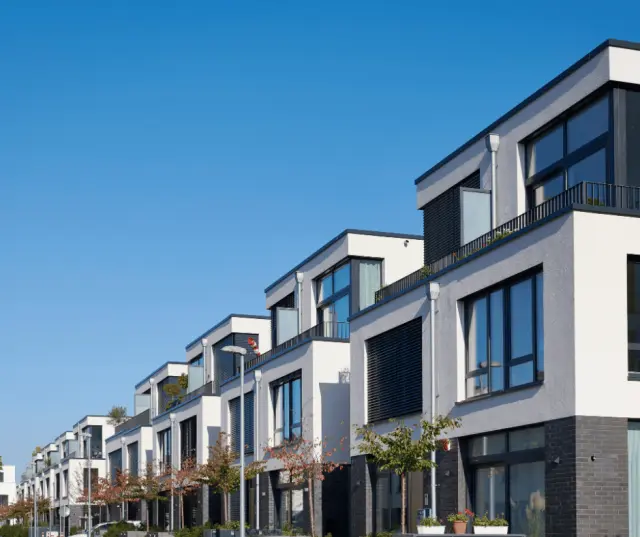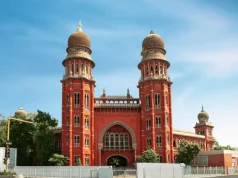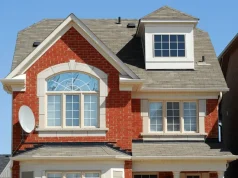Types of Houses in India You Must Know for Investment
Investing in real estate is a significant decision that involves carefully considering various factors. It also means understanding the diverse types of houses available is crucial. With its vast landscape and rich culture, India offers an array of housing options, each with its unique charm and advantages.
In this informative blog by Propex, we will explore the types of houses in India that should be on your radar for investment. Propex, through this blog, focuses and ensures you make an informed and rewarding choice.
Understanding the Indian Real Estate
With its diverse geographical, cultural, and climatic conditions, India offers many housing options. From busy metropolitan cities to scenic rural landscapes, the real estate market offers something for everyone. Let’s delve into some of the most prominent types of houses gaining traction for investment.
Materials Used in Construction
Understanding the materials used in construction is pivotal for gauging the durability and sustainability of different housing types in India.
- Bricks: Commonly used for strength and durability.
- Concrete: Cement, sand, and water for roofs, foundations, and walls.
- Wood: Natural insulator, prevalent in hilly areas but susceptible to decay.
- Glass: Modern homes extensively use glass for facades and ceilings, providing additional sunlight and reducing energy consumption.
Traditional Houses in India
India’s rich cultural diversity is reflected in traditional housing designs, each unique to its region.
- Kerala’s Nalukettu: Large houses with four linked blocks designed with clay, timber wood, and palm leaves.
- Karnataka’s Guttu Houses: Traditional houses with steeply pitched roofs, adapted for extreme climates, made of clay and hardwood.
- Rajasthan’s Havelis: Magnificent mansions with intricate carvings, reflecting Mughal, Persian, and Indian architectural influences.
- Kutch’s Bhungas: Round mud houses showcasing structural stability during earthquakes, designed for the region’s topography.
Decoding the Diversity: Types of Houses in India
Flats or Apartments: Urban Living Redefined
Propex Tip: Consider the promising returns from strategically located apartments as an urban investor.
Flats or apartments are the heartbeat of urban living in India. With the rising population and limited land availability in cities, vertical housing solutions have become increasingly popular. These multi-storeyed buildings offer a range of options, from compact 1BHK units to spacious penthouses.
The demand for apartments continues to soar, making them a lucrative investment option, especially in metro cities.
Also Read: Meaning of independent house
Villas: Luxurious Abodes with a Touch of Luxury
Propex Tip: Explore gated communities for villa investments, offering privacy and community living.
Villas represent the epitome of luxury and spacious living. These standalone houses have expansive lawns, multiple bedrooms, and state-of-the-art amenities. Investors seeking long-term returns and a touch of exclusivity can explore villa projects on the outskirts of cities.
Gated communities often provide a secure environment, attracting families looking for a serene yet connected lifestyle.
Duplex Houses: Balancing Privacy and Shared Living
Propex Tip: Look for duplex houses in upcoming residential projects to balance space and community living.
Duplex houses offer a unique blend of privacy and shared living. With two residential units stacked one above the other, these houses are ideal for joint families or those who value personal space and connectivity. Investors can target duplex apartments in emerging residential areas where demand is rising.
Condominiums: Independent Living with Shared Amenities
Propex Tip: Explore condominiums managed by reputed property management firms for hassle-free investments.
Condominiums, commonly known as condos, are gaining popularity in India. These independent housing units, often part of a larger complex, provide residents with the benefits of individual living and shared amenities. Investors can consider condos in rapidly developing urban areas with high demand for modern living experiences.
Also Read: what is Condominiums?
Row Houses: The Charm of Independent Living
Propex Tip: Invest in row houses for their unique charm and potential for renovation without builder interference.
Row houses, characterized by their identical architecture in a row, bring together the best of bungalows and flats. These houses allow for independent living within a community setting. Investors looking for properties with potential for renovation and customization can find row houses particularly appealing.
Studio Apartments: Compact Living for Modern Lifestyles
Propex Tip: Target areas with a young, working population for studio apartment investments.
Studio apartments, also known as RK or room-kitchen units, are gaining popularity among the young workforce. These compact living spaces cater to individuals or couples seeking functionality without compromising style. Investors can explore studio apartments in vibrant urban neighbourhoods with high demand for affordable and chic living spaces.
Also read: what is studio apartment?
Farmhouses: A Tranquil Escape from Urban Chaos
Propex Tip: Consider farmhouses in regions with high tourism potential for dual-income opportunities.
Farmhouses offer a tranquil retreat for investors looking beyond the hustle of city life. Surrounded by greenery and often equipped with modern amenities, farmhouses make for excellent vacation homes. Regions near major cities but away from the urban chaos present promising investment opportunities in this category.
Eco-friendly Houses: Aligning Investments with Sustainability
Propex Tip: Embrace the growing trend of eco-friendly living by investing in green homes.
As environmental consciousness grows, so does the demand for eco-friendly houses. These homes, designed with sustainable materials and energy-efficient technologies, appeal to a niche market. Investors focusing on long-term sustainability and responsible living can consider eco-friendly housing projects.
Houseboats: Unique Living on the Water
Propex Tip: Explore tourist-centric areas for houseboat investments, offering residential and rental income potential.
Houseboats, a distinctive housing option in India, offer a unique living experience on water bodies like lakes and rivers. Investors can explore regions with high tourist footfall for potential dual-income opportunities – a residence and a rental property.
Havelis: Preserving Architectural Heritage
Propex Tip: Explore heritage-rich regions for Haveli investments, contributing to cultural preservation.
Havelis, traditional mansions showcasing architectural grandeur, have transformed into heritage homes or hotels. Investors who appreciate history and culture can explore opportunities in regions like Rajasthan, where Havelis contribute to preserving India’s rich architectural heritage.
Key Considerations for Smart Real Estate Investments
Location is Paramount
- Propex emphasizes the importance of location. Whether it’s an apartment in a bustling city or a beach house, proximity to amenities and future development projects is a key consideration.
Understand the Market Trends
- Propex recommends staying abreast of market trends. Understanding the demand for specific types of houses in a given area is crucial for making informed investment decisions.
Consider Future Development
- Future developments in an area can significantly impact property values. Propex suggests considering government initiatives, infrastructure projects, and upcoming commercial developments.
Community Living vs. Privacy
- The choice between community living and privacy is personal. Propex advises considering your lifestyle preferences and long-term goals before making a decision.
Budgetary Constraints
- Set a realistic budget. Propex recommends factoring in not just the purchase price but also maintenance costs, property taxes, and potential returns on investment.
Conclusion
Investing in real estate is not just about owning a property; it’s about making a home or a lucrative venture. Propex understands the nuances of the Indian real estate market and recommends aligning your investment goals with the diverse types of houses available. If you’re drawn to the luxury of a villa, the tranquillity of a farmhouse, or the eco-consciousness of a green home.
Propex is your partner in making sound investment decisions.





